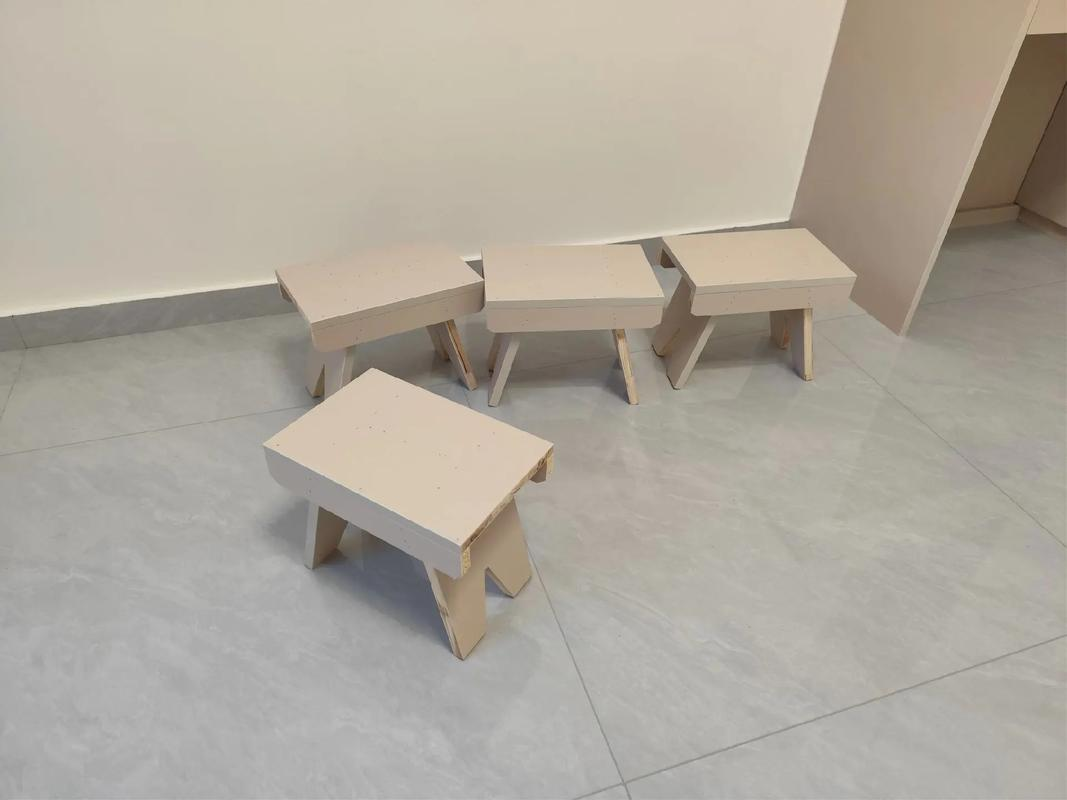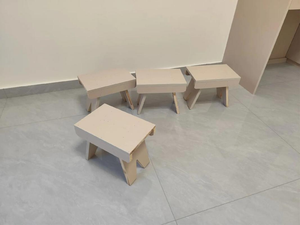
Small stool appearance inspection items - Warehouse inspection, factory inspection, certification services
There are numerous types of furniture in daily life, ranging from beds, sofas, dining tables and chairs to small stools. The inspection standards and methods for each product share some commonalities but also have differences. Today, we will take the small stool as an example to systematically introduce its appearance inspection items and inspection standards, and integrate them into the key links of factory inspection and quality management, providing references for quality inspectors, purchasers and production managers.
I. Factory Audit and Quality System Preparation
Before commencing mass production of small stools, it is recommended to conduct a supplier evaluation and pre-production factory inspection. The focus should be on assessing the factory's quality management system (such as whether it has ISO 9001 certification), raw material control procedures, production line process capabilities, and finished product inspection capabilities. The inspectors should obtain product drawings, technical specifications, customer confirmation samples, and acceptance standards (such as AQL sampling plans) in advance, and prepare corresponding measuring tools: calipers, tape measures, level meters, moisture content testers, roughness meters, etc.
II. Inspection Items and Execution Standards for Small Stools
1. Dimension Inspection:
The allowable error between the product drawing dimensions and the measured values is ±5mm;
The functional dimensions must comply with the standards. For example, the height of the stool should be 400mm, 420mm or 440mm, and the inner width of the armchair should be ≥ 460mm.
2. Structural performance and flatness:
Foot stability: Deviation in the stability of the base foot when touching the ground ≤ 2mm;
Flatness: The panel and the front-view panel components should be ≤ 0.2mm;
Adjacent edge perpendicularity: The error of the diagonal length of the panel should be ≤ 2.5mm; when the diagonal length of the frame is ≥ 1000mm, the tolerance should be ≤ 3mm; when it is < 1000mm, the tolerance should be ≤ 2mm.
3. Material and material quality inspection:
For the same glued assembly, the tree species should show no significant differences. It is prohibited to mix coniferous and broad-leaved woods.
Infested wood must be treated with insecticide and no wood that is still rotting should be used.
Visible parts must not use decayed materials. The area of slight decay within the parts shall not exceed 15% of the total part area.
Resin sacs must not be present on the surface or in the load-bearing areas.
Wood with a warp degree exceeding 20% at the stressed area shall not be used.
The width of the section should not exceed one-third of the material width, and the diameter should be no more than 12mm. It can be used if it has been repaired without affecting its strength or appearance.
The moisture content of the wood shall not exceed the local annual average equilibrium moisture content by more than 1%.
4. Inspection of woodworking craftsmanship:
The joint of the mortise and tenon must not have any broken tenons; the structure should be tight and sturdy.
The installation of accessories must not have any missed nails, exposed nails or missing parts.
The chamfered and rounded edges on the surface should be uniform and consistent.
Surface roughness of non-coated areas: The internal Ra value ranges from 3.2 to 12.5 μm (fine finish), while the Ra value in concealed areas is greater than 12.5 μm (coarse finish).
5. Painting and Surface Treatment:
The color of the entire piece or the entire set of products should be similar;
The paint film must not have wrinkled surface, stickiness or paint omission.
The uncoated areas should be kept clean.
The face coating should be smooth and even, with no obvious indentation of the wood pores.
There are no defects such as scratches, bubbles, runnability, or pinholes.
III. Classification of Common Defects (Based on AQL Standards):
Severe Defects (Critical Defects): Loose structure, broken joints, exposed rotten wood, severely unstable base feet;
Major Defects: Dimensional deviation, excessive moisture content, obvious cracks not repaired, wrinkled or peeling paint with incomplete coating.
Minor Defects: Slight color difference, slightly higher non-parallel surface roughness, and tiny surface particles.
IV. Suggestions for Inspection Process and Sampling Method
Random sampling inspection should be conducted in accordance with the AQL sampling plan (such as ISO 2859-1);
The inspection process should cover both the in-process quality control (IPQC) on the production line and the final random inspection (FRI), with a particular focus on monitoring key processes such as wood drying, mortise-and-tenon processing, and coating techniques.
For high-risk batches or new suppliers, it is recommended to introduce third-party inspection services for independent assessment.
The inspection report should clearly record the type, level and pictures of the defects, facilitating confirmation with the factory and improvement.
V. Summary
Although the small stool is small in size, it involves multiple important requirements such as structure, material, craftsmanship, and environmental adaptability. Enterprises should improve the quality management of the supply chain, establish a full-process quality control mechanism from raw material incoming inspection (IQC), process control to outgoing inspection, to ensure that the products comply with national standards (such as GB/T 3324-2018) and international buyer standards. Only by systematically combining factory inspection and inspection of products can the quality of products be continuously improved, the risks of after-sales service be reduced, and the market competitiveness be enhanced.
Share this product

Small stool appearance inspection items - Warehouse inspection, factor
There are a wide variety of furniture in life, and the inspection standards and methods for each product share commonalities.
